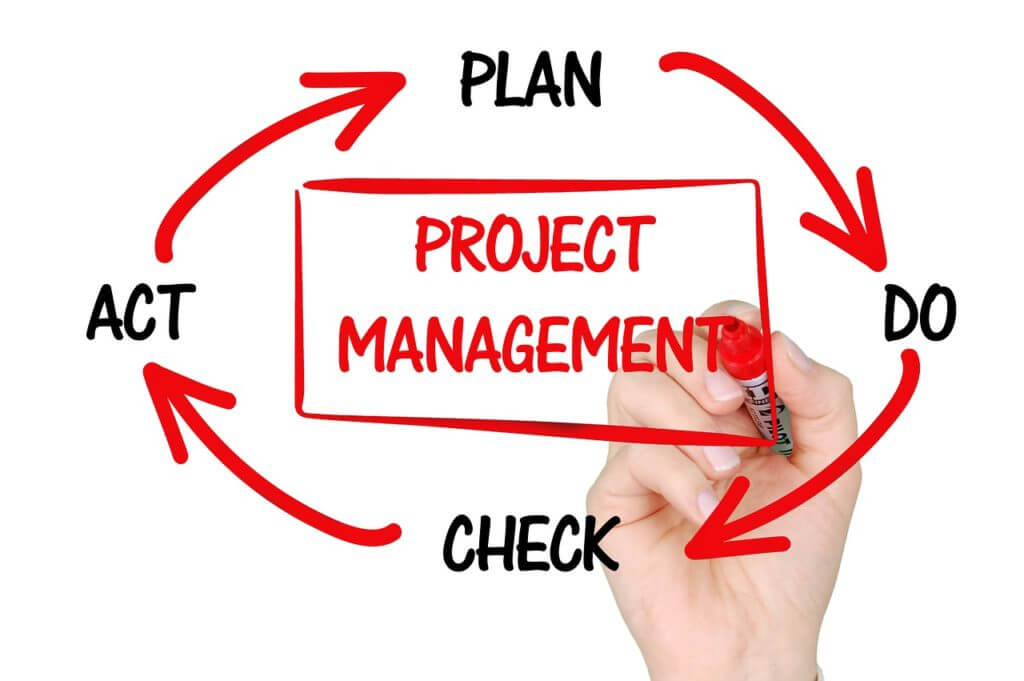Combining Project Management With Technology
Project management can be a challenging feat but rewarding. It requires meticulous attention to detail, organizational skills, technical skills, leadership skills, communication skills, making things happen, and more!
The most important thing is knowing your problem and what it will take to solve it. To solve issues, you need to identify what it will take to get the project done, plan it out, implement it, monitor it to ensure it works as it should, and close it out when you complete it.
There is also documentation, depending on the project management type you follow. For example, traditional project management usually tends to have more documentation than the iterative approach. However, your project management style will depend on the amount of documentation used.
To get a project from start to finish, a project manager must know how to deal with and eliminate obstacles that may threaten project failure. As a result, you will find project managers working in many industries since management is usually needed for projects.
One of the highly talked about industries is the technology industry. With a technical project manager, it is usually better if they have some previous experience or background. However, not all technical people can be project managers. Why? Because most technical people need help connecting the business side of project management with the technical side since there needs to be a balance between the two.
Regarding technical projects, the most critical components of managing a successful project are people, processes, and technology.
People
People are the ones who will be doing the work, so they must understand their roles and responsibilities in the project and how to perform their jobs. They need to have a clear definition of the project’s objectives and goals and the necessary skill set to execute their part of the project.
The project manager doesn’t need to know how to do everything the team does, but they do need to be able to motivate and guide the team in the right direction. Communication will ensure things run smoothly, especially when navigating the jargon between team members.
Processes
Technical projects require processes that are clear and consistent. You can’t apply the same business processes from non-technical projects to technical ones. There should be a straightforward way in which your team will perform these processes, such as adequately outlining and following the lifecycle of a technical project.
Technology
A significant aspect of technical projects is integration. This can be one of the challenging parts of a technical project. To perform successful integrations, there needs to be a well-planned process for testing and detailed requirements specifying the technology’s acceptance criteria and necessary functions.
Balancing the Scale
To find a balance between project management and technology, you first need to understand the complexity of the project you are dealing with. You will also need to know what style would be the best for the type of project you are managing.
The most significant space between the two exists with the technology’s promised functions vs. what is delivered. A contributing factor is miscommunication between the technical team, non-technical project managers, and customers.
To fix this issue and find a balance between the two, the project manager should focus on communicating the customer’s needs to the team correctly and that they guide the team in the right direction through meetings, feedback, and brainstorming sessions. The technical team can decide on development and implementation since they are the experts, as long as the project manager clearly understands and communicates any implications in layman’s terms and vice versa. A solid technical lead on the team is a great way to help bridge the communication gap.
Technical awareness is also a plus. Having a technical awareness of the project you are managing does not mean you need to be a technology expert. It just means that taking the time to understand the technology for the project and its constraints can go a long way. You will also be able to bring more value to the team.
Clear communication and understanding between the technical and business sides can help solve many issues with managing technical projects. It’s up to the project manager to listen and ask the right questions without assuming and being able to provide valuable input that will benefit both the customer and the technical team.
References:
Biafore, B. (2016, March 31). Project Management Foundations. Retrieved September 25, 2017, from https://www.lynda.com/Project-tutorials/Project-Management-Fundamentals/424947-2.html
Madsen, S. (2015, April 14). 5 Best Practices for Managing Large IT Projects. Retrieved September 26, 2017, from https://www.liquidplanner.com/blog/5-considerations-for-managing-large-it-projects/
McGannon, B. (2016, July 19). Project Management: Technical Projects. Retrieved September 26, 2017, from https://www.lynda.com/Project-Management-tutorials/Managing-Technical-Projects/450184-2.html
PMI. (2008) Significance of technology management and project management aligned with portfolio management is vital for any project-based organization. Retrieved September 25, 2017, from https://www.pmi.org/learning/library/technology-project-management-aligned-7144
PMI. (2008, March) The role of technology in the project manager performance model. Retrieved September 25, 2017, from https://www.pmi.org/learning/library/technology-project-manager-performance-model-5586

